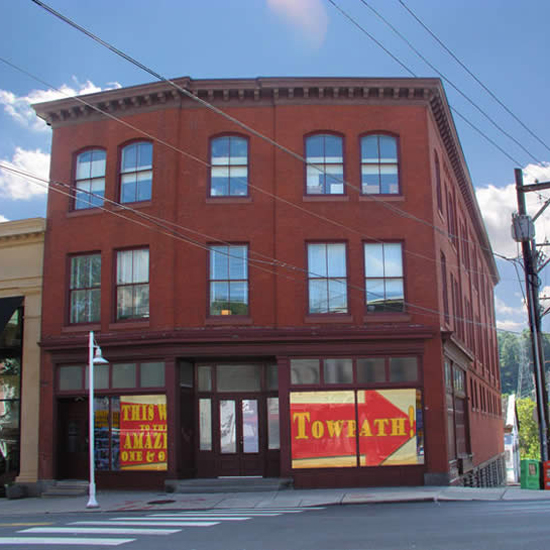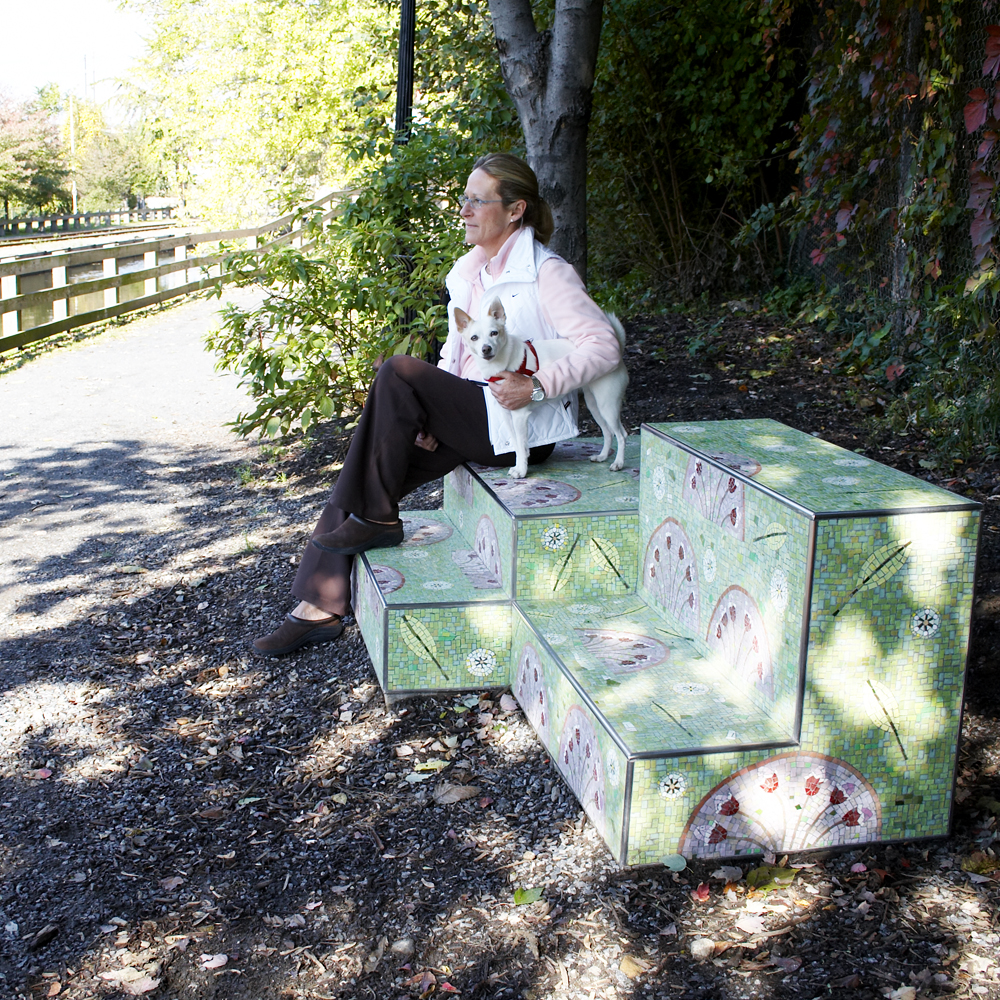To celebrate the installation of Manayunk Stoops: Heart and Home, Jeremy Tenenbaum of the architecture firm Venturi, Scott Brown and Associates created a storefront display for their offices on Main Street in Manayunk. The windows directed passersby to the new artwork and provided a “Stoopology” — a history of Manayunk, the Canal, and Philadelphia’s famous stoops.
Stoopology: The Secret History of the Stoop
by Jeremy Tenenbaum
The STOOP is anonymous, innocuous, vulgar, and vital. It lets you in, lets you out, and begs you to stay. The American porch is renowned in the literature of community life, but the stoop is a secret agent of social cohesion.

The stoop, first of all, for you out-of-towners, refers to the small stone or concrete steps leading up from the street into a house or apartment building. The word derives from the Dutch stoep — for it was Dutch settlers who brought the concept of raised houses and stoops to colonial New York, Philadelphia, and other immigrant cities.
Through the 19th century, many urban residences were designed with parlor and living spaces on the first floor, while the kitchen was in the basement and accessible from a separate entrance. Stoops directed visitors into the social areas of a house and kept them from having to tromp through the service areas.
Stoops are bridges between the public and private realms, and as such they’re social outposts. They offer relief from sweltering apartments and the opportunity to gossip with neighbors, people-watch, and show off. Children play upon them within safe sight of the house. Arrayed along the street, stoop-sitters dissuade crime through a literal neighborhood watch.
In Philadelphia’s outer neighborhoods, rowhouses and detached homes often have front porches — but in neighborhoods closer to Center City, we historically prefer stoops.
About the Manayunk Canal and Towpath
Manayunk’s early history was the history of the Canal — the industry it generated, the immigrant populace it drew, and eventually the ruin into which it sank. The Canal was built in 1819 as part of a system of waterways between Philadelphia and Pottsville, Along the sides of each canal were paths where mules — tethered by rope — towed boats between river locks.

Industry’s wealth literally flowed through the town. Mills were built along the Canal and immigrants came to operate them. The thriving mills and Canal helped gestate Philadelphia’s increase in size and scale. Manayunk flourished as the nation’s largest industrial area — the “Manchester” of America. The Philadelphia and Reading Railroad ended that. Faster and cheaper, the Railroad competed along the same industrial corridor. Constant flooding also damaged the Canal. In 1917, the last commercial boat passed through Manayunk. But the story of the Canal and the Towpath continues.
In the 1980s and 1990s, Manayunk’s Main Street — which parallels the Canal — underwent an astounding redevelopment with new restaurants, bars, condos, and nightlife, The Canal and Towpath no longer function as industrial conduits — but they serve recreational uses. Restoration of the Canal will soon allow canoes and small boats to sail through to the Schuylkill.
The old mule path is now part of Fairmount Park and composes a portion of the 22-mile Schuylkill River Trail linking Philadelphia’s Center City to Valley Forge National Historic Park. Every year, the Towpath is used by over 500,000 walkers, runners, and biker., Signs along the gravel and boardwalk path document Manayunk’s historical heritage. And along the Canal’s muddy waters, an occasional catfish trolls, roving geese and ducks rest for a while, water snakes slither, and turtles nestle into the rough bank.